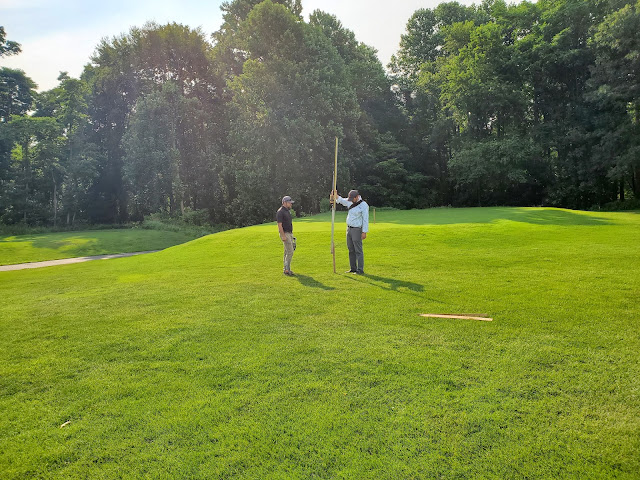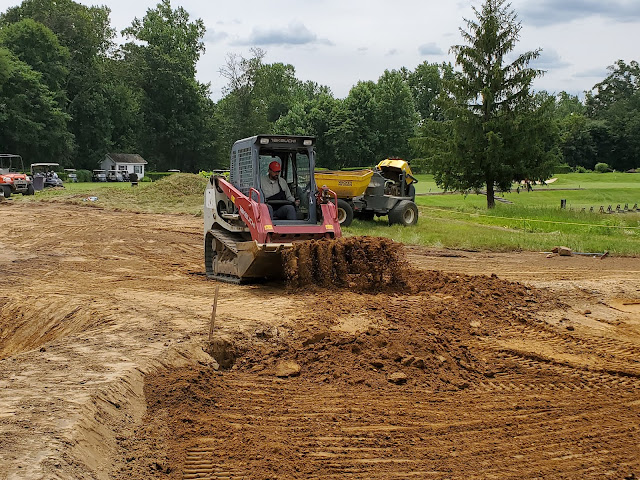In May, we were seeing Brown Ring Patch on the greens, and tackled that issue:
This past week, as we worked through the most recent heat wave, overall, it looked like the course was holding up well. While #14 green (the hottest spot on the course) had a few areas wilt, most of the putting surfaces were in solid shape.
Of course, that would be the time that some Fairy Ring disease came roaring in on several of the greens. When Fairy Ring shows up, there is no need for a petri dish and microscope to diagnose the problem, as this fungus is quite easily identifiable.
There can be several visible signs of the fungi at work: a dark green circle caused by a release of nitrogen in the soil, mushrooms may form on the turf surface, or the fungi may cause the perimeter of the ring to become hydrophobic, causing the turf to wilt.
 |
| Moisture level on the edge of the Fairy Ring. |
Significantly higher moisture inside the ring.
A combination of fungicides and wetting agents labeled for the control of this fungus have been applied. However, these rings are persistent, and with the low fertility regimen we have the greens on, the rings really stand out. The pictures above were taken the day after treatment, and the "10.3" reading is actually an improvement, and encouraging.
Should this Fairy Ring really have been a surprise? Perhaps not. In looking at our application records, we saw Fairy Ring in 2018 and in 2012. With both of these prior times, it was during the first week of July. A common factor seems to be some hot, humid weather during this week in all three years. Of course, hot and humid are far from uncommon this time of year, thus there may well be other contributing factors.









